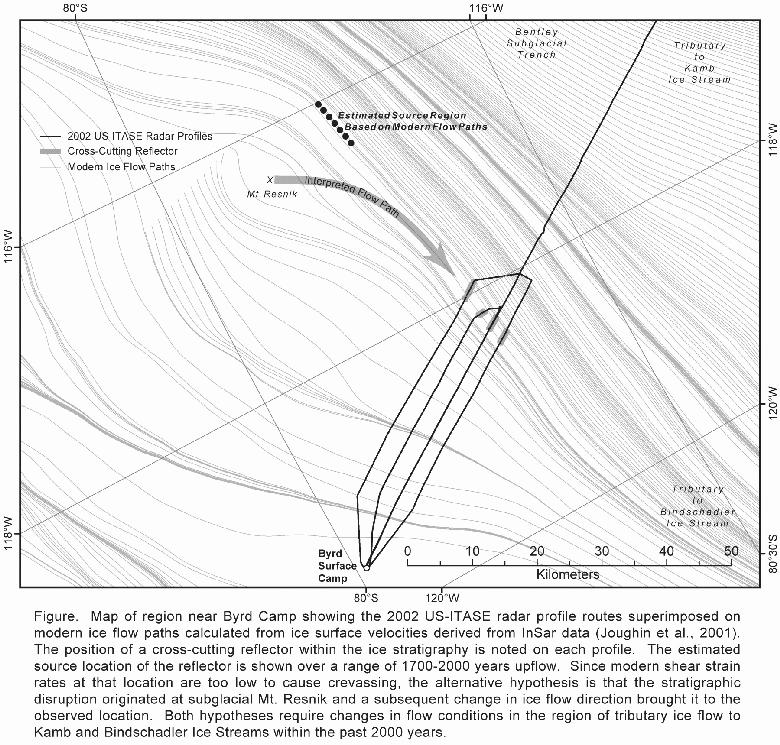Post-LGM changes in ice stream tributary flow near Byrd Camp
Brian C. Welch, Robert W. Jacobel
Physics Department, St. Olaf College, Northfield, MN 55057
welchb@stolaf.edu, jacobel@stolaf.edu
Englacial stratigraphy is disturbed as ice passes over and around subglacial mountains. Greater stratigraphic disruption is expected when the mountain height is a significant fraction of the ice thickness. The stratigraphic disruptions of these mountains are advected downstream and act as ice flow tracers, at least until the stress regime changes substantially. The presence of numerous subglacial mountains near Byrd Camp and the tributary to Bindschadler Ice Stream (BIS) allows us to examine the interaction between the ice and mountains and to track changes in ice flow near the tributary.
The deep radar data from the 2002 US-ITASE traverse shows a cross-cutting reflector roughly 40 km south of Byrd Camp. Stratigraphic correlation of the buried upper surface of this reflector with the age-depth record from the Byrd Core indicates a formation age of 1900 years BP. We interpret this feature as a remnant of ice flow over Mt. Resnik, a large subglacial mountain approx. 60 km SE of Byrd. However, modern flow lines from InSar-derived velocities (Joughin et al., 1999) point to a source location within the BIS tributary about 15 km south of Mt. Resnik. This projected source area is today a region of shear strain rates well below what is required to cause crevassing and stratigraphic disruption.
This presents two possibilities for the source region of the cross-cutting reflector: 1) the modern flowlines have remained constant throughout the advection history of the feature, but strain rates were higher in the past at the source site, possibly due to faster flow in the BIS tributary; or 2) the feature originated at Mt. Resnik and flow direction subsequently changed. Either scenario represents a change in ice flow in the inland region of BIS tributary development within the last 2000 years.

